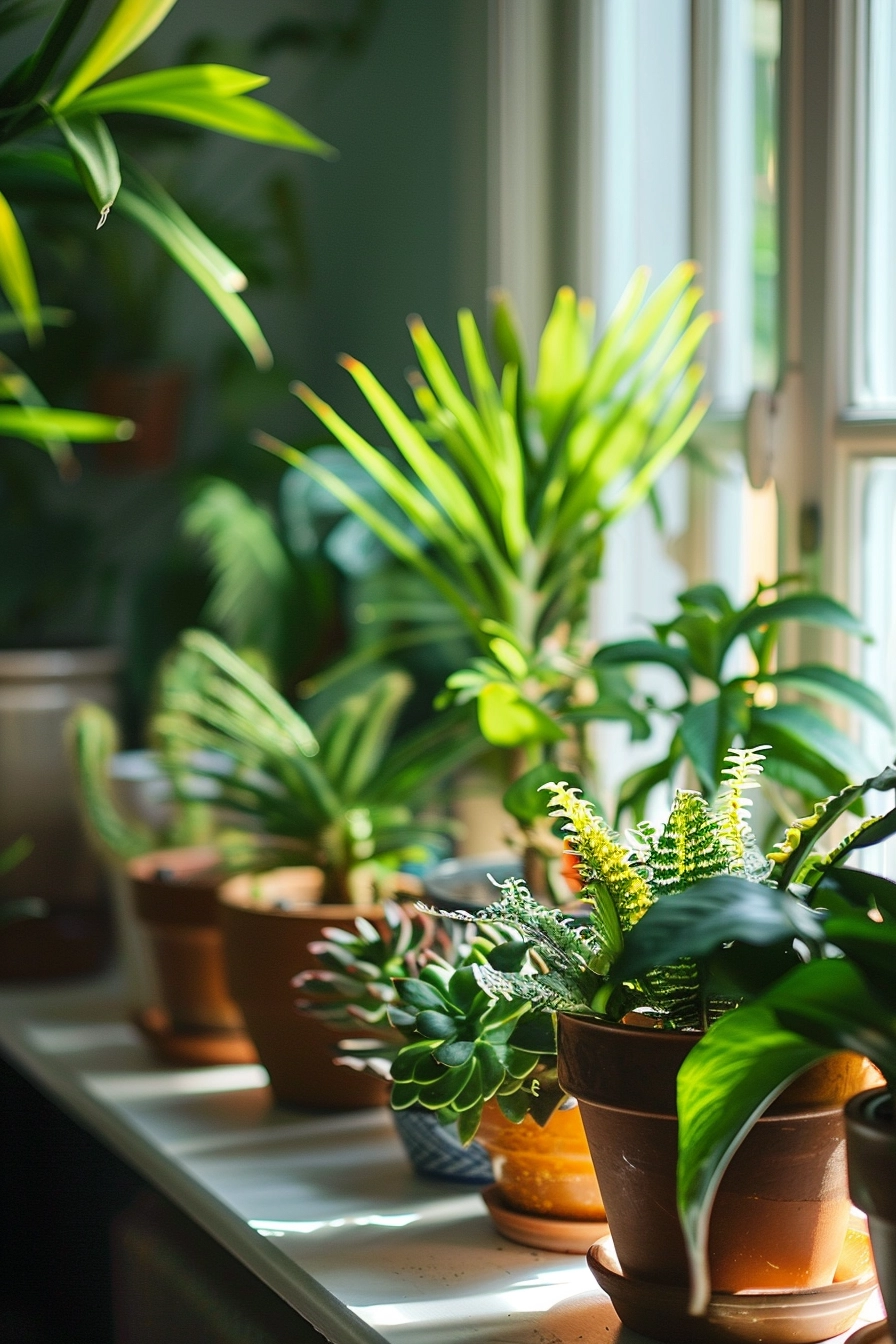As a plant lover and enthusiast, I’ve come across numerous houseplant myths and misconceptions that float around. These misguided beliefs can lead to confusion and even harm to our beloved indoor greenery. That’s why I’m here to set the record straight and debunk some of the most common houseplant myths that have emerged.
Understanding the truth behind these misconceptions is crucial for providing optimal care to your indoor garden. By busting these myths, you’ll gain valuable insights into the real needs of your houseplants and ensure their longevity and vitality.
Together, let’s explore these common houseplant misconceptions and discover the facts that will help us become better plant parents!
Key Takeaways:
- Don’t overwater your houseplants – they need good drainage.
- Plants thrive with consistent but indirect sunlight.
- Fertilizing your plants is essential, but moderation is key.
- Different plants have specific humidity preferences.
- Regularly inspect your plants for signs of pests or diseases.
Debunking Houseplant Care Misconceptions
In the world of houseplants, there are various misconceptions that have been widely circulated. It’s important to separate fact from fiction to ensure your houseplants receive the proper care they need. In this section, I will debunk some of the most common houseplant care misconceptions to help you become a confident and successful indoor gardener.

1. Myth: Overwatering is better than underwatering
Many people believe that overwatering their houseplants is safer than underwatering them. However, this is a common misconception. Overwatering can lead to root rot and suffocate the roots, causing the plant to deteriorate over time. It’s crucial to find the right balance and water your plants only when needed.
2. Myth: All houseplants require direct sunlight
Contrary to popular belief, not all houseplants thrive in direct sunlight. While some plants indeed require direct sunlight to grow, others prefer indirect or even low light conditions. Before placing your houseplant by a sunny window, it’s essential to research its specific light requirements to avoid burning or stunting its growth.
“Understanding the specific needs of your houseplants is key to their overall health and well-being.”
3. Myth: Houseplants don’t need fertilizer
Some people believe that houseplants can survive without any form of fertilizer. However, indoor environments often lack the essential nutrients plants need to thrive. Fertilizing your houseplants regularly with a balanced and appropriate fertilizer helps provide them with the necessary nutrients for healthy growth and vibrant foliage.
4. Myth: Houseplants should be misted daily
Misting houseplants is often seen as a way to increase humidity and provide moisture. However, misting alone does not significantly impact humidity levels in most indoor spaces. Instead, consider alternative methods to increase humidity, such as using a humidifier or placing your plants on trays with water-filled pebbles.
5. Myth: All houseplants are pet-friendly
While houseplants can bring beauty and freshness to your space, not all of them are safe for pets. Many common houseplants, such as lilies, pothos, and peace lilies, can be toxic to dogs, cats, and other animals if ingested. Always research the toxicity of plants before introducing them into a pet-friendly environment.
By dispelling these houseplant care misconceptions, you can confidently provide the proper care and maintenance your indoor plants need. Stay tuned for the next section, where we will explore more common houseplant myths and reveal the truth behind them.

The Truth about Common Houseplant Myths
As indoor gardening enthusiasts, we are often bombarded with a plethora of information about houseplant care. However, not all information is accurate, and there are several common houseplant myths that we must debunk to ensure the well-being of our green friends. Let’s dive in and uncover the truth behind these myths!
Myth #1: Plants thrive best in direct sunlight. While it’s true that most plants require light to grow, not all of them can tolerate direct sunlight. In fact, excessive sunlight exposure can cause foliage burn and harm your plants. It’s essential to research the light requirements of each plant and provide the appropriate level of light accordingly.
Myth #2: Overwatering is better than underwatering. Contrary to this belief, overwatering can be detrimental to the health of your plants. The roots can suffocate and rot, leading to root diseases and even plant death. It’s important to water your houseplants appropriately by checking the moisture level of the soil and only watering when needed.
Myth #3: Misting your plants is crucial for humidity. While misting can temporarily increase humidity levels around the foliage, it is not the most effective method. Invest in a humidifier or create humidity trays instead for a sustainable and consistent humidity source that your plants will appreciate.


